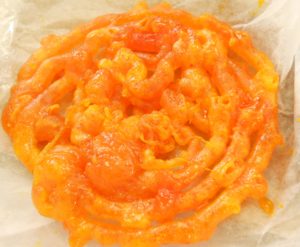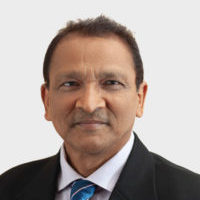 The epidemiological information on diabetes in Trinidad and Tobago (T&T) is shocking.
The epidemiological information on diabetes in Trinidad and Tobago (T&T) is shocking.
In 2015, the International Diabetes Federation revealed that T&T was in the top 12% in the world in the prevalence of diabetes. The survey was based on a total of 193 countries consisting of persons aged 20-79 who had type 1 or type 2 diabetes.
In his paper entitled, “The Diabetes Epidemic in Trinidad & Tobago,” Dr Kenwyn Nicholls, M.D., (2010) stated that T&T had the most persons with diabetes per capita in the Western Hemisphere. He added that of 1.3 million persons in T&T, an estimated 143,000 persons (11%) had diabetes. Nicholls also stated that 1 in 4 hospital admission was attributed to diabetes.
Research on diabetes in Trinidad was also conducted in 2014 – 2015 by Drs Shivananda B Nayak, Valendrea Rahming, Yudestri Raghunanan, et al. The results of their study revealed that residents of South Trinidad showed a higher proportion of persons with diabetes when compared to the North population (69% to 29% respectively – a difference of 40%).
Long-term complications of diabetes can harm the eyes, kidneys, nerves, skin and blood vessels. Diabetes can lead to blindness, irregular menstruation, kidney transplant or dialysis, amputation of the toes, foot and leg as well as indigestion, arthritis, acid reflux, heart attacks and strokes. People with diabetes sometimes suffer with depression and dementia.
Many people are unaware that being overweight and obese predisposes one to diabetes. Medical studies have shown that obesity dramatically increases the likelihood of type 2 diabetes. Other risk factors for diabetes include increasing age (over 45 years), inactive lifestyle (exercising less than three times a week), family history (a parent or sibling with diabetes) and ethnicity.
A number of surveys has shown a trend of increasing levels of obesity even among primary and secondary school children in T&T. One survey done by Yvonne Ann Batson, Surujpal Teelucksingh, et. al. was conducted among school children aged 7 – 18 years in 2009 – 2010. The results revealed that 17% of the children were overweight and 15% were obese.
The study by Yvonne Ann Batson, Surujpal Teelucksingh, et. al. also included data on prevalence of obesity among ethnic groups in T&T. The results showed that (East) Indians, Africans and those of Mixed ethnicity were roughly equal in weight when measured using BMI for age. However, this was not the case when using bio-impedance (BIA). With this instrument, the prevalence of obesity in Indians increased significantly from 17% to 24% (a difference of 7%). This result probably reflects the fact that, for any given BMI, Indians have a higher fat mass than other groups, which may in itself reflect the well-established greater risk of heart disease among Indians.
Nicholls found that people of Indian and African descent are 3-5 times more likely than persons of Caucasian descent to develop type 2 diabetes. However, Indians were higher in number with diabetes when compared to other ethnicities.
Indians are more diabetic mainly because of their diet as well as their sedentary lifestyle and family history. Some studies have also found that genetics increases the risk of developing diabetes even more than obesity. Indians consume large portions of food, and do so regularly, as well as alcohol, which contribute to obesity, diabetes and heart diseases. Alcohol is made by using glucose from sugar.
More than any other ethnic group, Indians consume foods high in fat (vegetable oil, ghee, etc.), starch (roti, doubles, alloo, etc.) and sugar. The book entitled Caribbean East Indian Recipes lists the various types of rotis: aloo [potato] roti, cassava roti, daahl puri roti, paratha roti [“buss-up-shut”], dosti roti, sada roti, roat and sohari.
All of them are made with white flour which is a carbohydrate that increases the risk of being overweight, obese and diabetic. Containing much starch, white flour is bleached (to make it look white) with a chemical that produces an unintended byproduct named alloxan (C4 H2O4N2). Alloxan is a poison used in medical research to produce diabetes in healthy experimental animals, primarily rats and mice.
Aloo [potato] roti, daahl puri roti, paratha roti [“buss-up-shut”], dosti roti, sada roti, roat and sohari are also made with vegetable oil. Ghee [clarified butter] is also added to make paratha roti, roat and sohari. These forms of saturated fats have been associated with obesity, diabetes and heart disease.
Caribbean East Indian Recipes also lists different types of sweets and desserts [meethai]: barfi, batasa, dahee, eggless cake, goolgula, gulab jamoon, halwa, jelibi, kurma, ladoo, lupsee, maleeda, panjaree, parsad, paynuse, pera, rasgoola, sawine/saywine and sweet rice.
Made with sugar and/or sweetened condensed and evaporated milk, large and regular amounts of these sweets and desserts often lead to weight problems, cardiovascular diseases and diabetes.

is a full-time anthropologist at the University of Guyana (UG) and Fellow of The Eccles Centre for American Studies, British Library (2022-23). He is a former Assistant Professor at the University of Trinidad and Tobago (UTT). He obtained his Ph.D. in Anthropology from the University of Florida (UF). As a doctoral student, he won a Florida Caribbean Institute Award, an A. Curtis Wilgus Grant, and an Organization of American States (OAS) Fellowship.
Mahabir received a National Award (Hummingbird Silver Medal) for his contribution to education in his country in 2011. He was among 50 recipients who received a Distinguished Alumni Award from the UWI Alumni Association.
Mahabir is the author of 12 books to date.
